BitRaser Mobile Eraser & Diagnostics
- 1. About BitRaser Mobile Eraser & Diagnostics
- 2. About the Guide
 3. Getting Started
3. Getting Started 4. Working with BitRaser Mobile Eraser & Diagnostics
4. Working with BitRaser Mobile Eraser & Diagnostics- 5. Frequently Asked Questions (FAQ)
- 6. About Stellar

BitRaser Mobile Eraser & Diagnostics / 4. Working with BitRaser Mobile Eraser & Diagnostics / 4.3. Diagnostic Stages / 4.3.1. Diagnostic Process
4.3.1. Diagnostic Process
You can diagnose your device by using the diagnose feature of BitRaser Mobile Eraser & Diagnostics.
Steps to diagnose a device using BitRaser Mobile Eraser & Diagnostics:
1. Run BitRaser Mobile Eraser & Diagnostics. Plug the iOS/Android device into the computer.
2. The Devices tab (selected by default) lists all the attached iOS/Android devices. The screen which appears is displayed below:
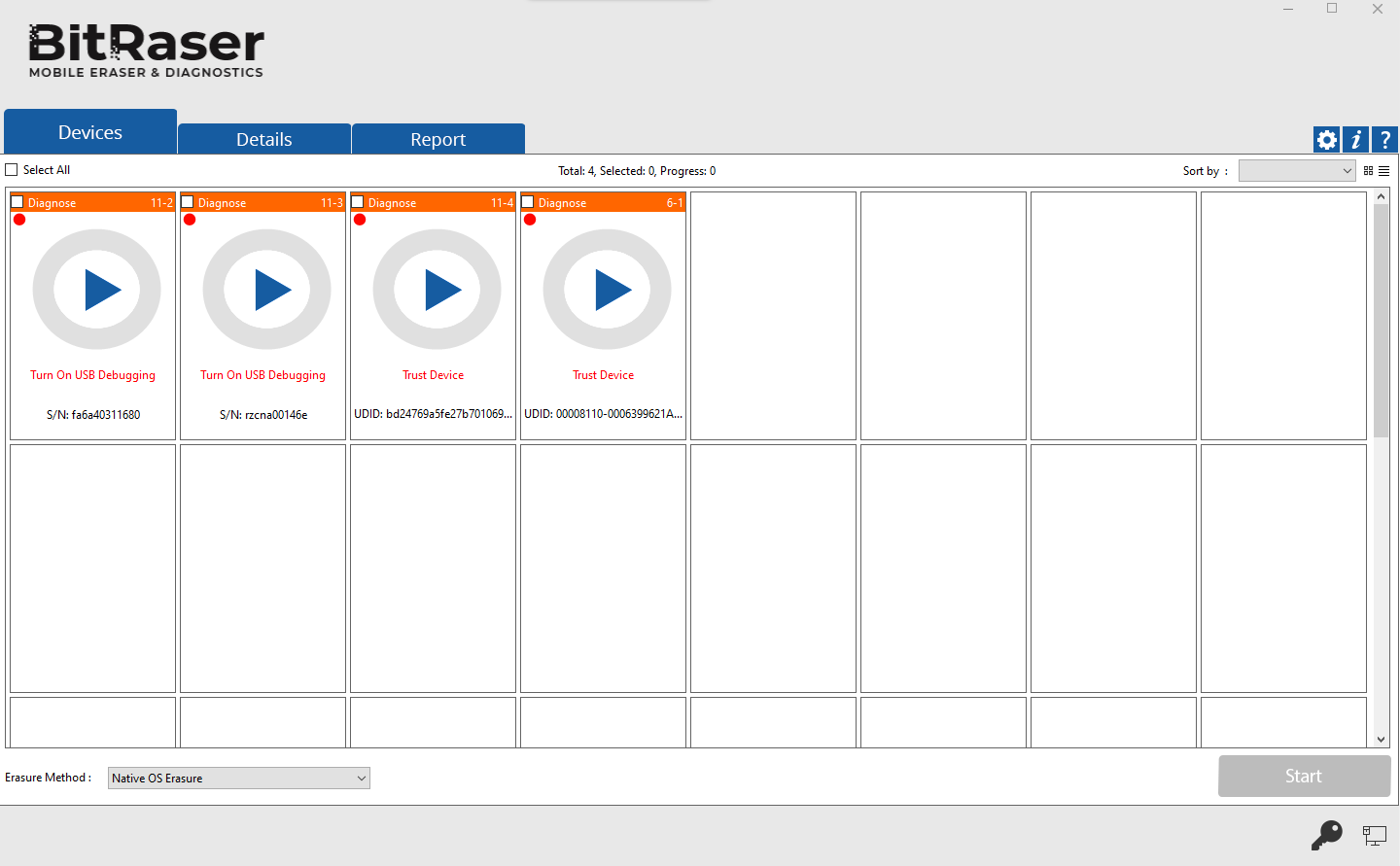
A device message appears after its connection. For example: In the above screen, an Android device shows the message 'Turn On USB Debugging'. To continue from this stage, USB Debugging must be allowed on the Android device's end.
Note: For more information, please refer to the section 'Enable USB Debugging in an Android device'.
3. All the devices along with their information like process (Erase or Diagnose), progress bar, status, ECID/IMEI, and serial number are displayed. You can also see icons for connectivity status, SIM card status, and FMD (Find my device) locked/unlocked status.
Note: If you wish to change the process (Erase or Diagnose), click on the Erase (header area in green color) to change the process to Diagnose (header area in orange color) and vise versa.
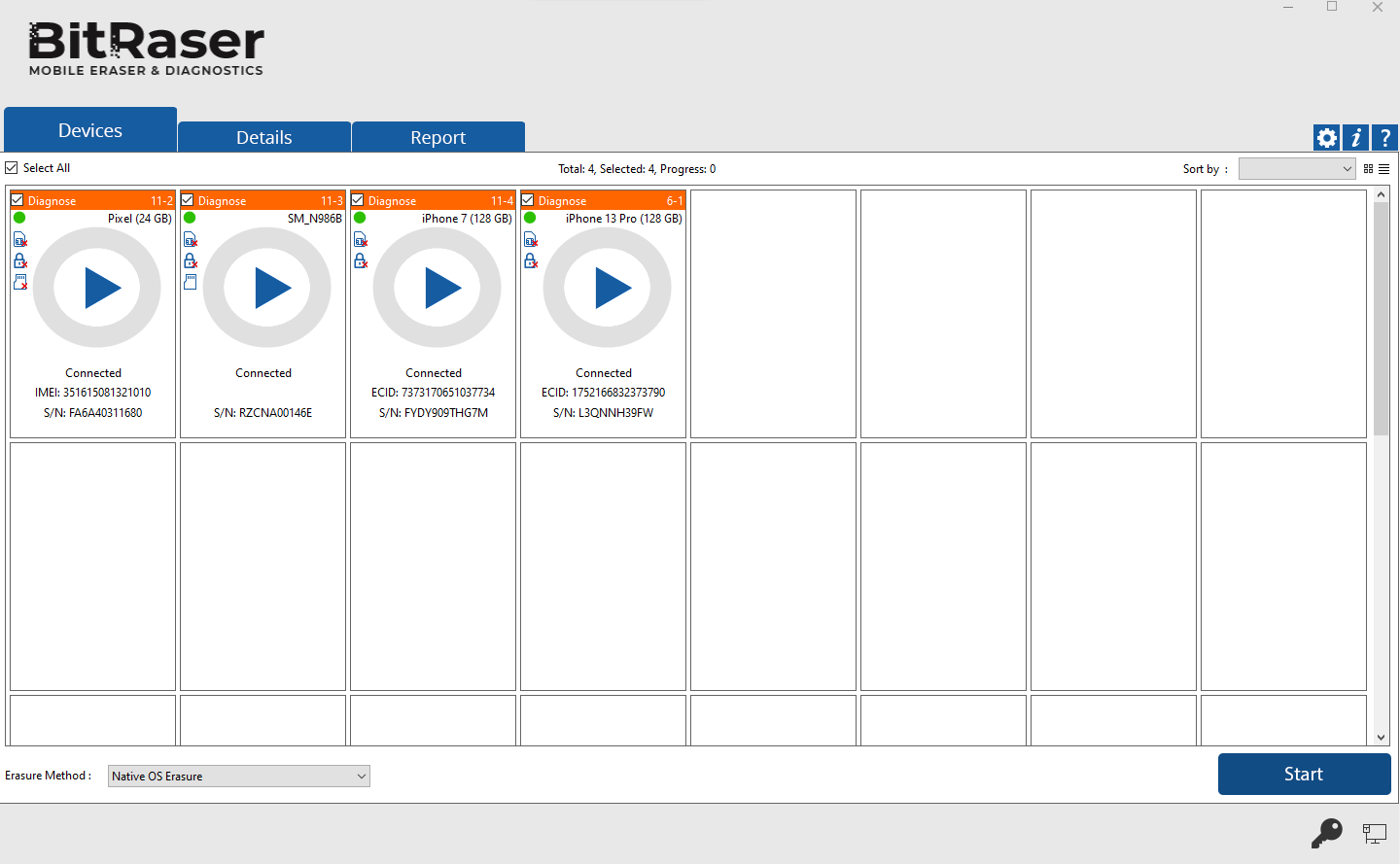
Note: When you install BitRaser Mobile Eraser & Diagnostics on a device running Android OS, you control which capabilities or information BitRaser Mobile Eraser & Diagnostics can access-known as Permissions. For example, an application might want permission to see your device contacts or location. You can control which permissions that an application can access after the application installs on your device. Keep in mind turning off permissions may cause BitRaser Mobile Eraser & Diagnostics on your device to lose functionality.
Note: For Redmi devices, you need to install a BitraserMobileDiagnostics.apk on your phone. See Procedure to install BitraserMobileDiagnostics.apk on Redmi Phone to know the required steps.
4. You can preview the device's information either in a Grid view or List view.
- In the Grid view, the devices get displayed in a grid-like structure, and also the devices can be sort using the Sort By option. The Sort By option allows sorting the devices based on the following information/criteria: USB ID, Name, Serial Number, Type, Size, ECID/IMEI, and Status.
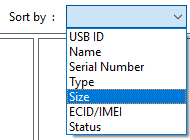
- In the List view, the devices get displayed in a list.
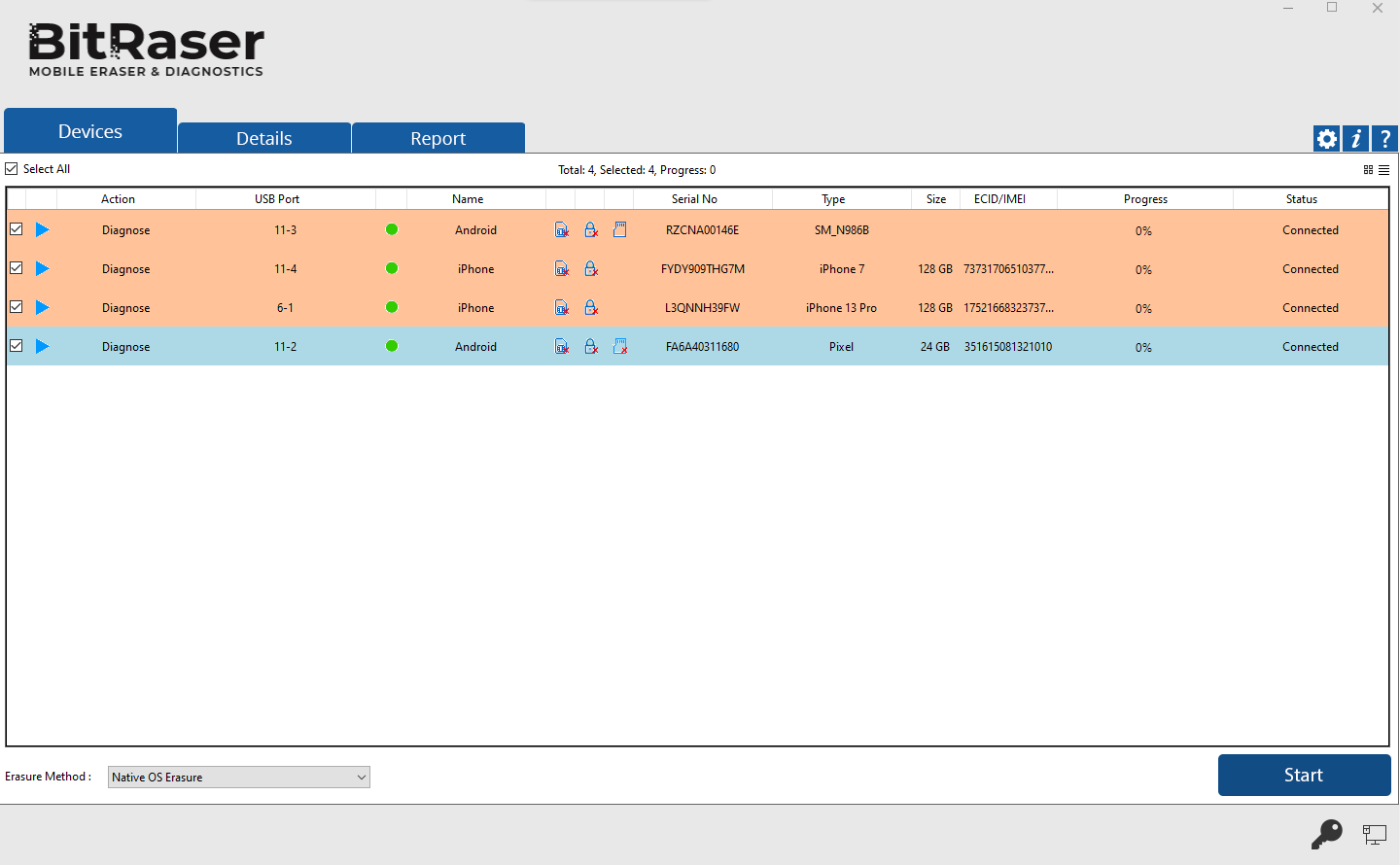
5. Clicking on any of the following devices will show device information of the corresponding device. These details can be printed by clicking on the Print Label button.
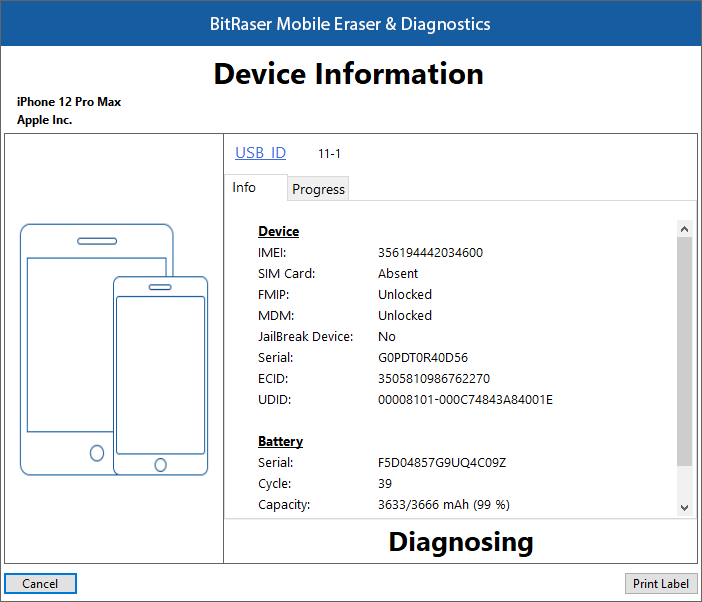
6. From the dialog that appears, click on USB ID to change the identifier for the USB port. Click OK.
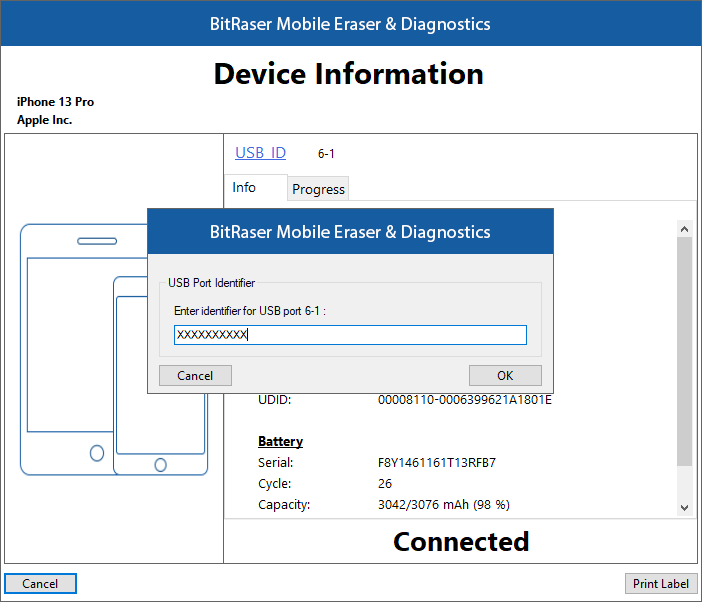
7. Select the devices to diagnose by marking the check-box before every device.
Note: Mark Select All option to select every listed device for diagnosing.

8. Click the Start button to begin the diagnostic process on your device.
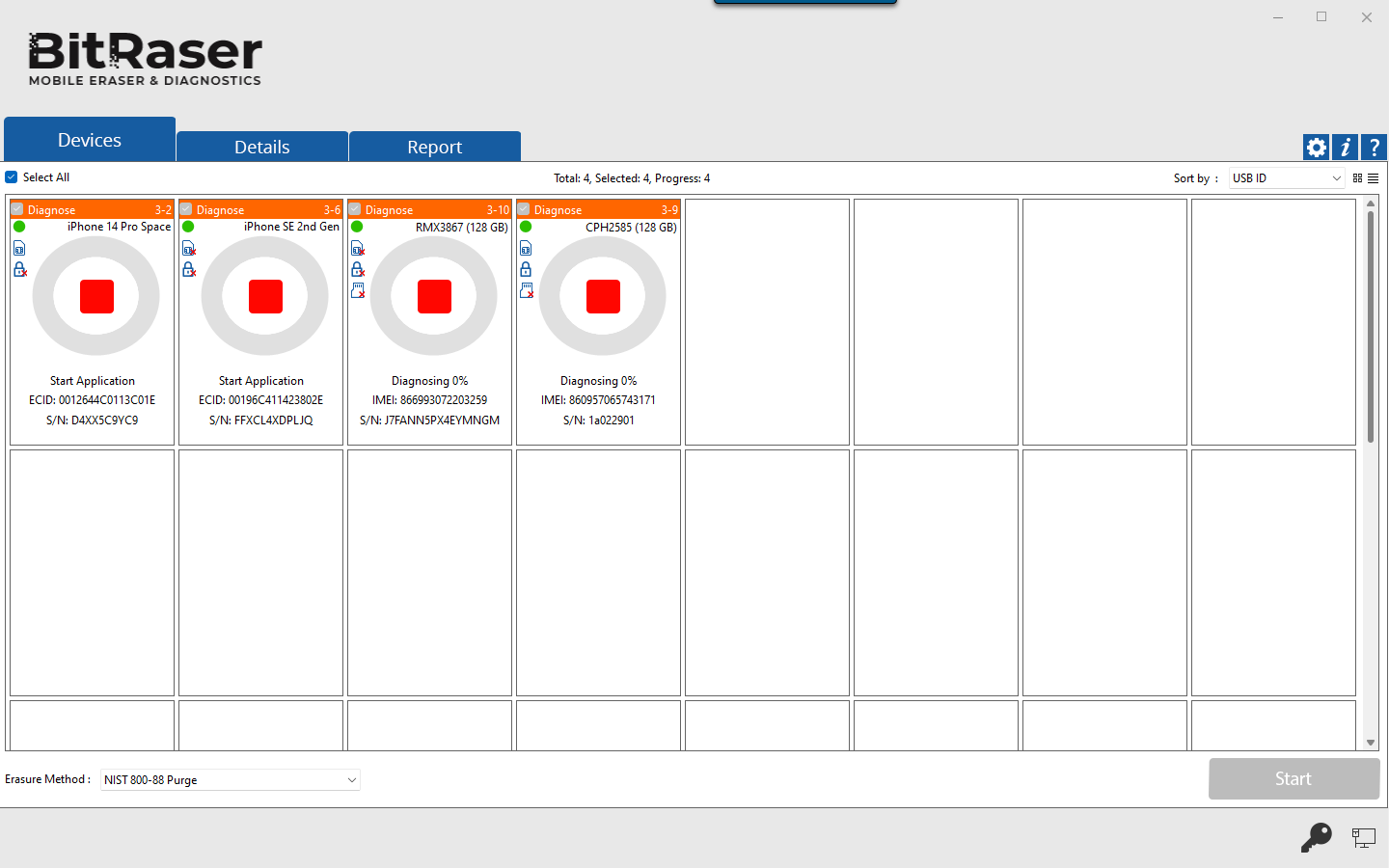
Note: The application begins with automatic diagnostics tests and then proceeds to manual diagnostics tests.
9. Upon completion of the diagnostic process, the application will display the "Completed" status for all the diagnosed devices as shown below.
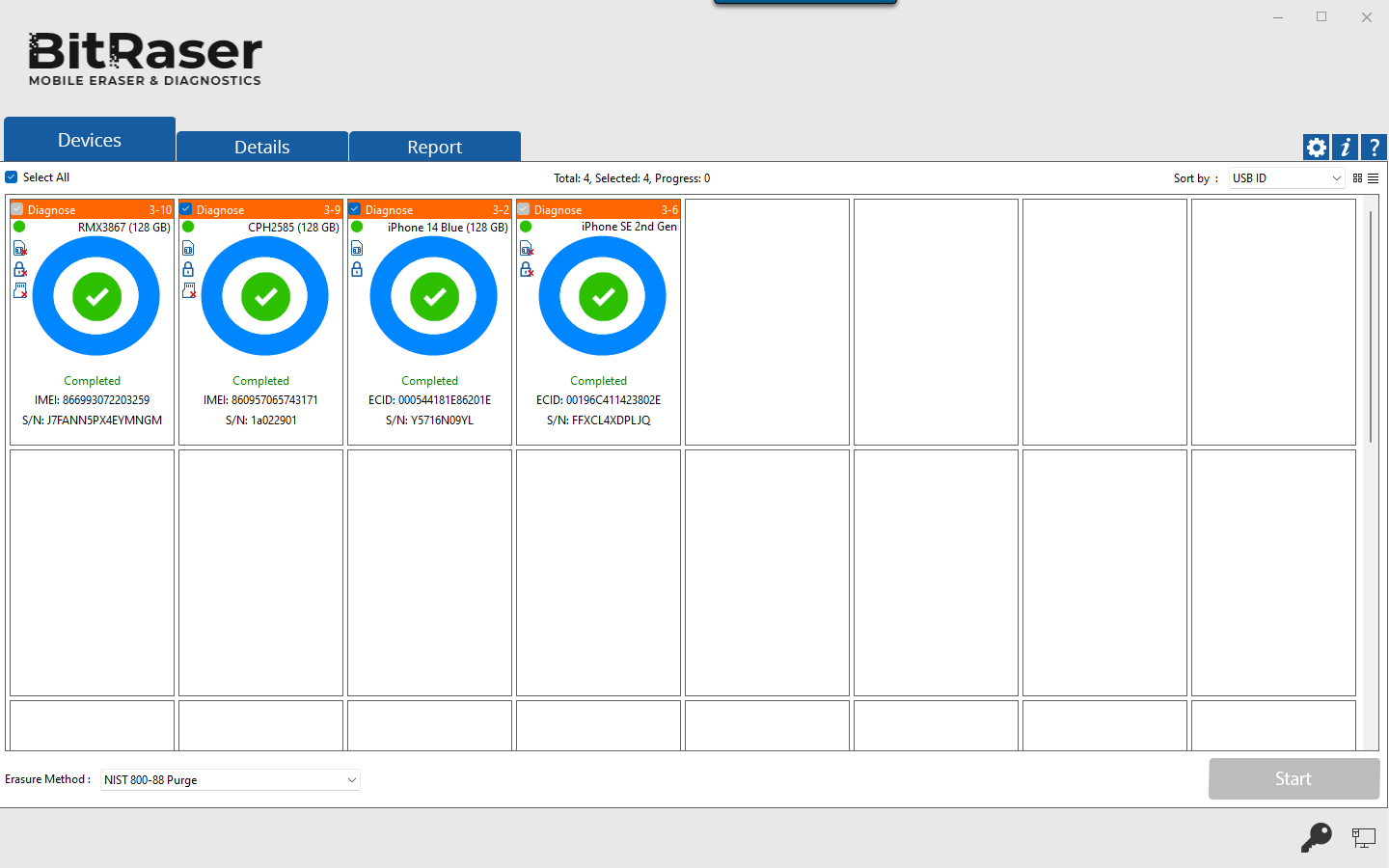
10. After completing the diagnostic process, the application will display the summary of the test results on your mobile device, as shown below in the images.
For Android
|
Automatic Tests |
Manual Tests |
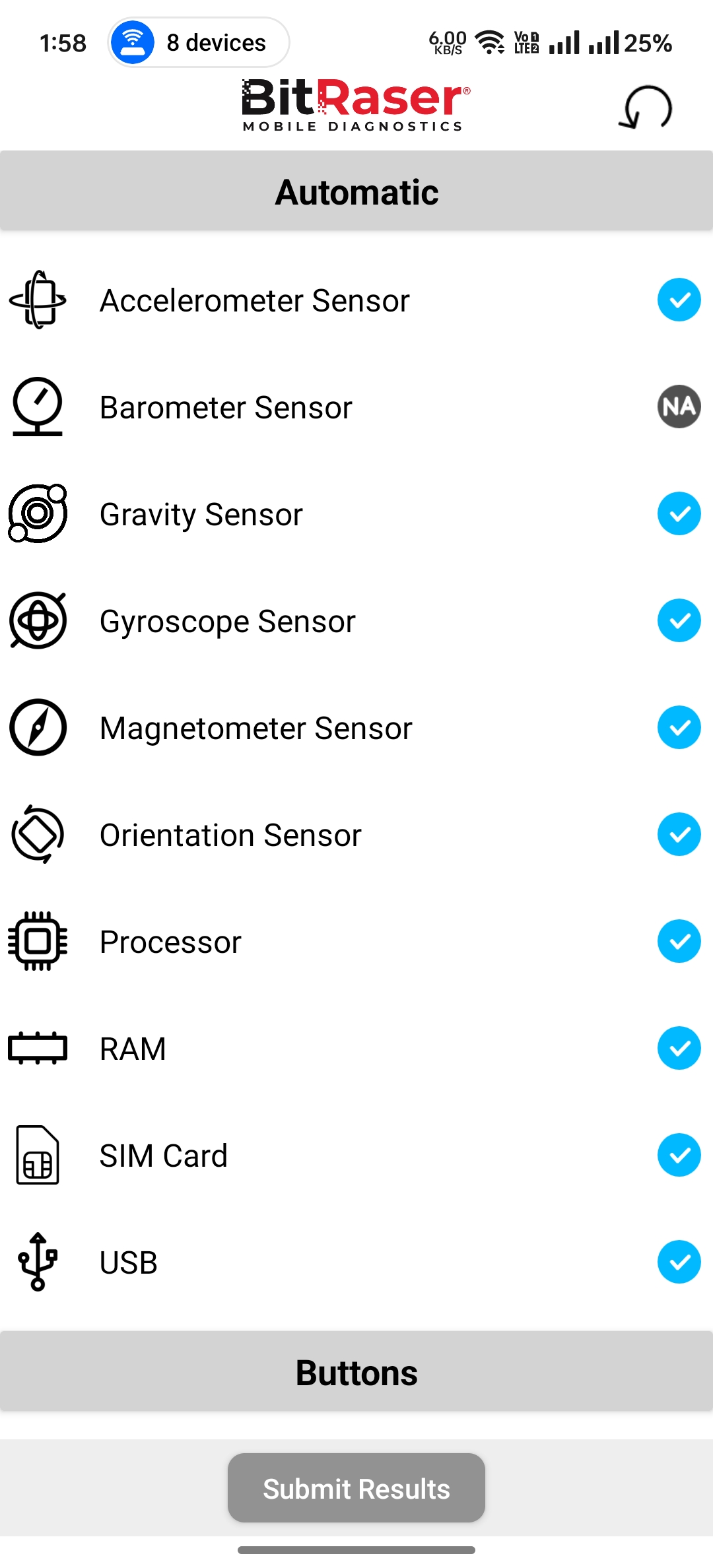 |
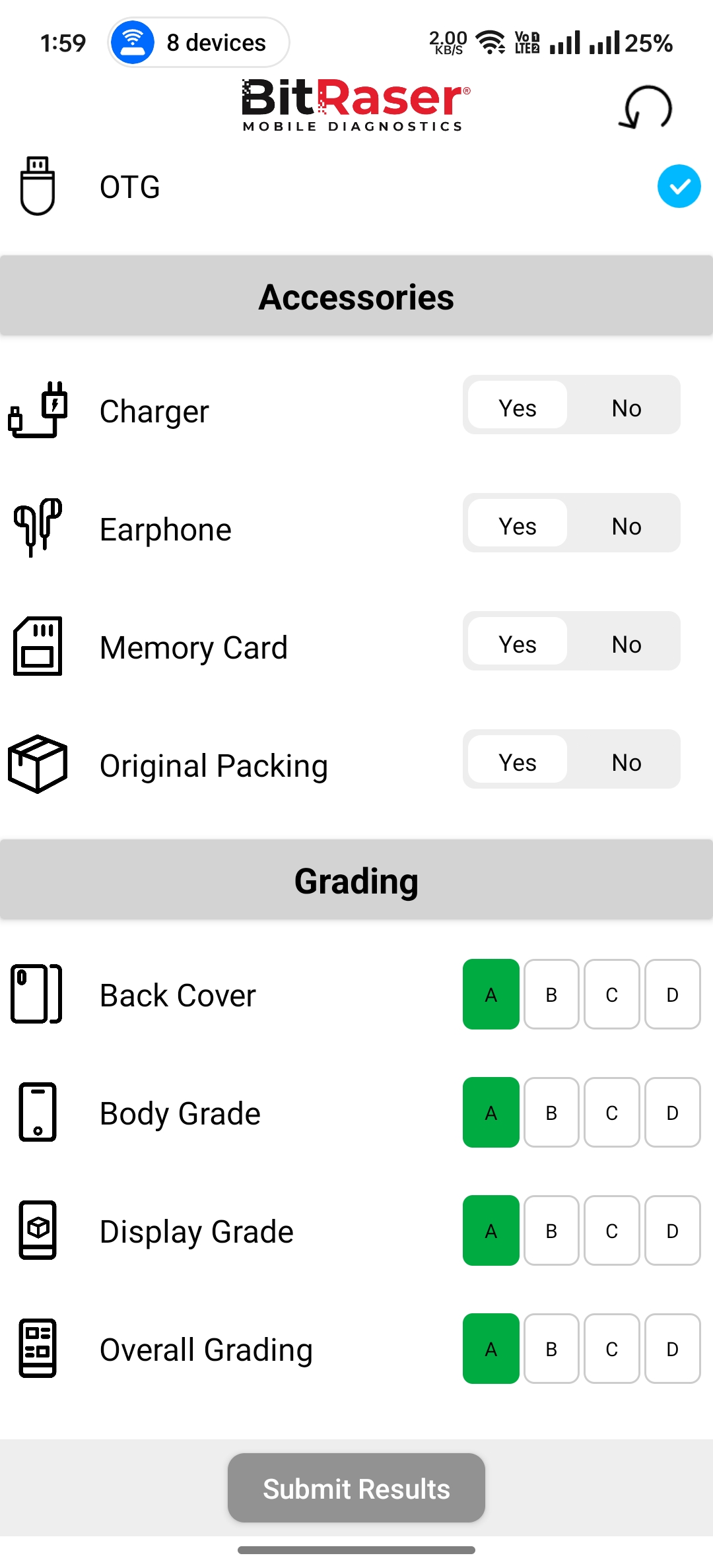 |
For iPhone
|
Automatic Tests |
Manual Tests |
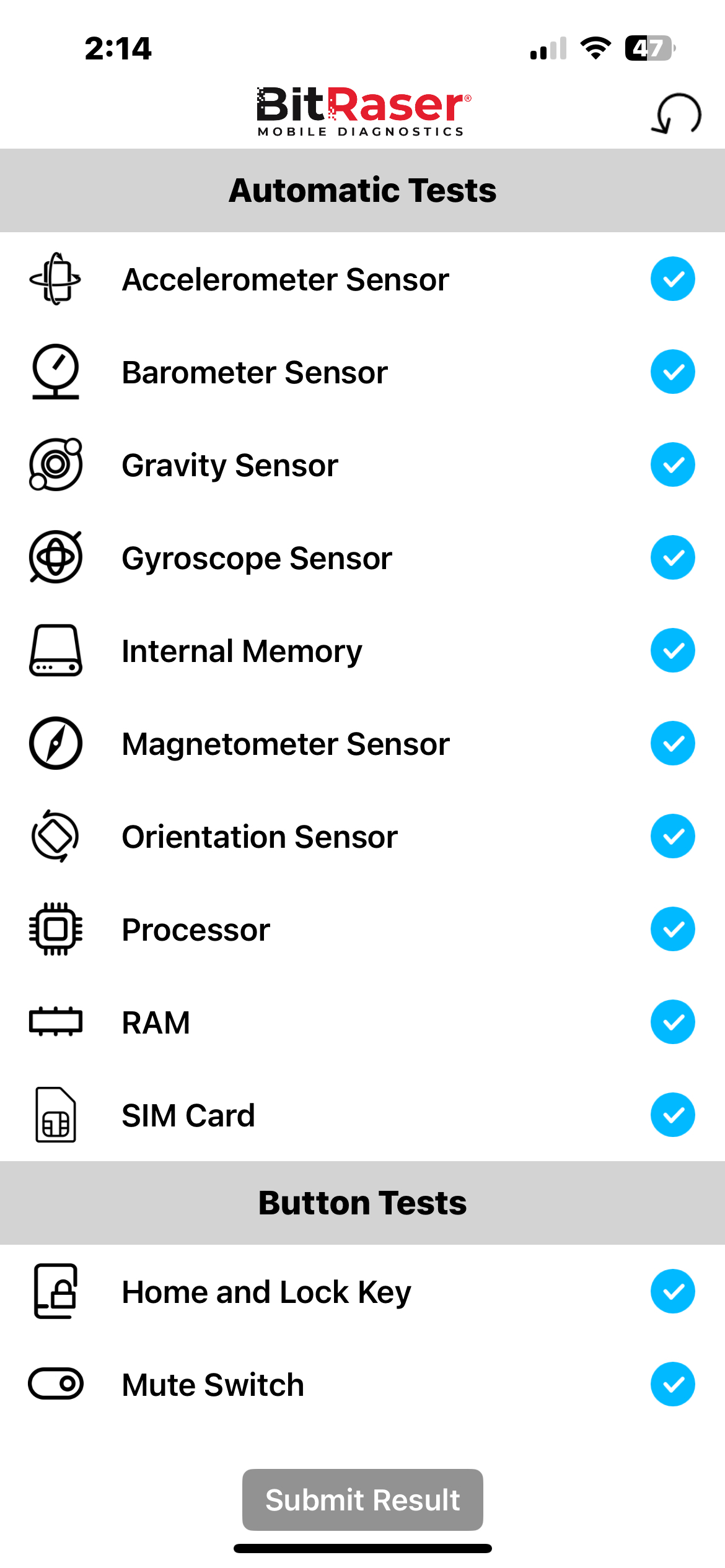 |
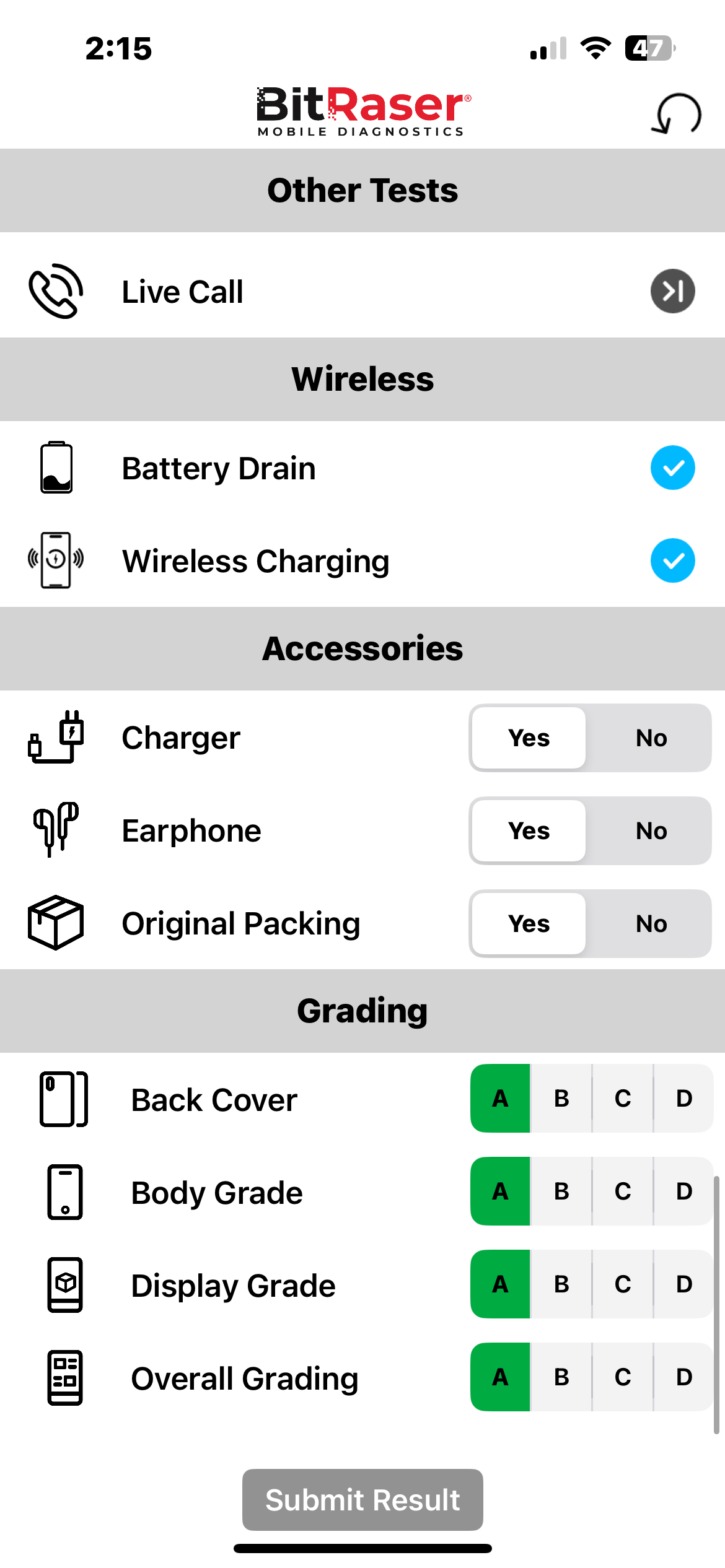 |
Note: If you wish to diagnose a single device, you can start the process by simply clicking the play button in the middle.
Note: After you start the diagnostic process, you can disconnect your device from the system and perform the test. However, the final report will be sent to the cloud when you reconnect the device and submit result.
Note: At this stage, BitRaser Mobile Eraser & Diagnostics acquire license information from BitRaser Cloud, and licenses are consumed depending upon the number of devices you have selected for diagnostics. Therefore, you need an active internet connection to start the diagnostic process.
Tip: It is recommended to enable Bluetooth, GPS (location services), and Wi-Fi on your device before starting the diagnostic process, to diagnose these services on your device.
Note: On your iOS device, make sure you have enabled the Bluetooth from the Control Centre of your device. This is required to diagnose the Bluetooth service successfully.